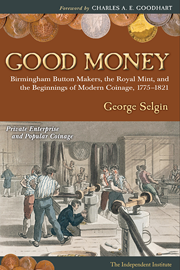Who can forget the end of “Planet of the Apes” when Charlton Heston, kneeling before the half-buried remains of the Statue of Liberty, slams his fists into the sand and cries, “You maniacs! You blew it up! Ah, damn you ...damn you all to hell!”
Now imagine the same scene, but with a half-buried Morgan Stanley building standing in for Miss Liberty and a time-traveling Walter Bagehot playing the lead, and you’ve got the perfect Hollywood dramatization of the real-life tragedy that, with luck, is having its denouement on Wall Street.
Bagehot? The great Victorian man of letters, best remembered today as the second and most celebrated editor of the British magazine, The Economist, wasn’t exactly a hunk. But he certainly could have delivered those futile last lines with real conviction, for he was among the first to recognize the vast destructive potential of that newfangled weapon of Victorian finance: the modern central bank.
Bagehot first alerted readers to this potential, and offered his suggestions for containing it, in an article that appeared in The Economist after the great panic and credit crisis of 1866. That panic witnessed the spectacular collapse of Overend, Gurney and Co., which had long been Great Britain’s premier investment house.
Bagehot understood that, during such panics, the Bank of England alone commanded the confidence needed to serve other financial firms as a “lender of last resort.” But as Bagehot put it later in his book “Lombard Street: A Description of the Money Market” (1873), the bank’s “faltering way”—its arbitrary and inconsistent use of its unique lending powers—only tended to make things worse. “The public,” Bagehot wrote, “is never sure what policy will be adopted at the most important moment: it is not sure what amount of advance will be made. ...And until we have on this point a clear understanding with the Bank of England, both our ability to avoid crises and our terror at crises will always be greater than they would otherwise be.”
The ultimate source of trouble, Bagehot believed, was the very existence of the Bank of England and the special privileges it enjoyed. But because nothing save a revolution seemed likely to do away with the “Old Lady of Threadneedle Street,” as it was called, Bagehot’s preferred, practical solution was for the bank expressly to commit itself to lending freely during crises, though on good collateral only, and at “penalty” rates. The restrictive provisions were supposed to limit aid to otherwise solvent firms panic had rendered illiquid.
Bagehot’s recommendation has since become a sort of master precept of central banking—albeit one that’s mainly honored in the breach by central bankers.
To be fair to today’s central bankers, there’s never been much agreement on how to apply Bagehot’s rule in practice. Just what do “good collateral” and “penalty rates” mean in times like these?
While no one may precisely be able to define good collateral, and one can debate whether the rate at which banks offer to lend unsecured funds to other banks, known as the London Interbank Offered Rate, or LIBOR rate, plus 8 percent constitutes a “penalty” rate, who even pretends that recent central bank lending has been based on good collateral?
But rescuing insolvent firms is the least of it. The real damage comes from the Treasury’s utter lack of any consistent last-resort lending rule. The recently enacted financial institutions bailout bill does little to clarify this.
That’s just the sort of thing that troubled Bagehot almost a century and a half ago, when central banks were still in their swaddling clothes. Yet central bankers and governments still don’t get it, despite the lip service they pay to this great thinker from our past.









